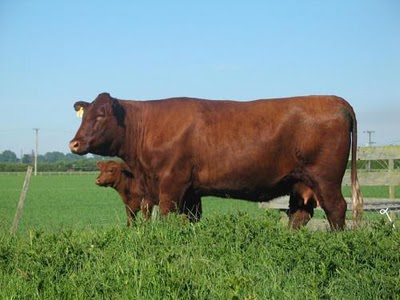
By Brent Plugge, UNL Extension Educator
Drought is one of the harshest weather patterns cattlemen must cope with in part because drought conditions occur gradually over time making it difficult to take immediate action. Reduced harvested forage yields, limited water supply and dried up pastures are all potential problems and these problems affect both short and long term management decisions. The main concern during drought is to maintain the health and vigor of your pastures while making sure your herd’s nutrient requirements are being met. It is more important than ever to plan early this year because continued below normal precipitation is being predicted. Remember, the longer you wait to make decisions, the fewer options you will have available to you.
The current drought conditions cause cow-calf producers to closely evaluate their herds to determine which animals should be culled due to the availability and price of pasture and rangeland and the prospects for a tight forage supply. It is even more difficult to determine which females to sell when drought conditions are coupled with low cattle prices. Having a depopulation plan allows you to market cows before the market is "flooded" with cull cows and price is reduced. If cow herd numbers need to be reduced or depopulation is the best alternative, consider the following:
Assuming grass is available only take cow/calf pairs to grass. Non-pregnant cows or cows that lost their calves at calving should be culled. Therefore, only cows that have the potential to wean a calf are turned out to pasture. Cull cows that have been identified as poor mothers, have unsound udders, teats, feet and legs, bad disposition, and other physical problems. Older cows that are being considered to be retained in the herd should be checked carefully to insure they have a sound mouth and are likely to sustain productivity for at least two to three years.
Identify the productive and nonproductive females in your herd. Use your individual records kept on each cow to identify cows that have consistently weaned calves that rank in the bottom 10-25% of your herd. Go back to the last two to three years' of information collected and if a cow ranks low in both years or in all three years, they should be candidates for culling.
Check cows for pregnancy as soon after the breeding season as possible. Experienced ultrasound technicians are about 100% accurate on a 30 to 35 day old fetus. Experienced rectal palpaters can detect pregnancy in cows where the fetus is between 45 and 60 days. Accuracy is critical as you do not want to sell a pregnant cow that was palpated as not pregnant. I would recommend that you wait at least 40 days after the end of the breeding season to pregnancy check.
Evaluate the number of heifers that you need to keep for replacements. Where you are at in terms of your genetic progress may dictate how many replacements your wish to keep. Although these heifers require less total feed than cows, they need higher quality feed because they still have a nutrient requirement for growth. Even though your replacement heifer will require less feed, you may wish to keep more of your 4-6 year old cows because you have a better chance of meeting their requirements on lower quality feed and they have proven themselves in your system.
There may be females in the herd that are suckling a calf but the intent for these females is to cull them after the calf is weaned. If the pasture and forage resources are limited, consider early weaning the calf at 45 to 90 days of age and selling the cow. Early weaned calves are efficient at converting feed to gain. It is more economical and more efficient to feed the calf directly than to feed the calf through feeding the cow during drought situations. Once the calf is weaned, the cow can be culled or maintained on a lower quality ration, especially when the breeding season has been completed.
If there are herd bulls that are not going to be part of the bull battery the following year, consider culling them soon after the end of the breeding season.
Selling only a few cull cows in a fiscal year will likely not have any tax implications. If a large number of cows are to be sold, then you may want to contact your accountant to determine any tax implications. For more information on cow culling strategies please contact your local UNL – Extension office.
More details at: http://go.unl.edu/5y6